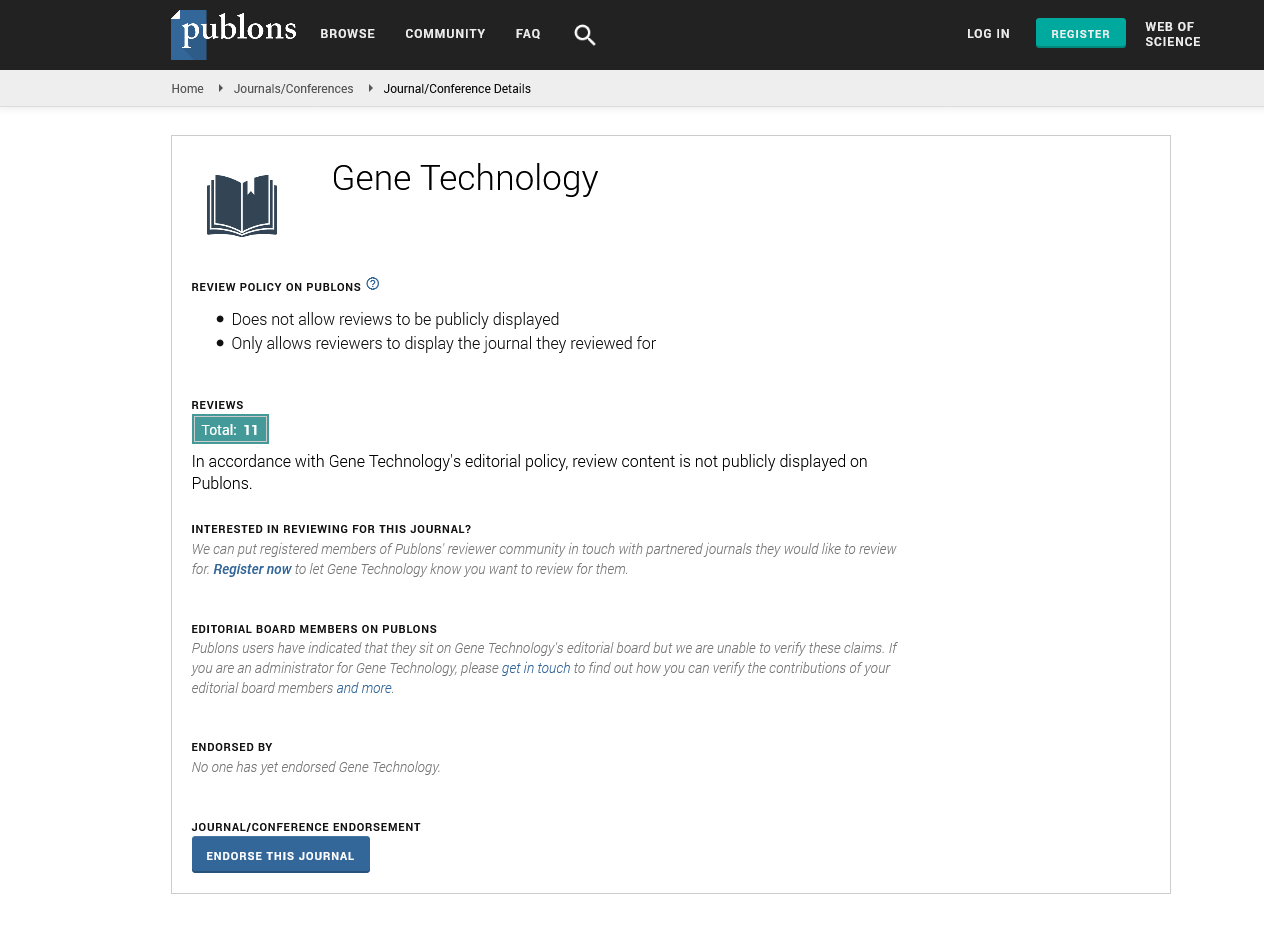Indexed In
- Academic Keys
- ResearchBible
- CiteFactor
- Access to Global Online Research in Agriculture (AGORA)
- RefSeek
- Hamdard University
- EBSCO A-Z
- OCLC- WorldCat
- Publons
- Euro Pub
- Google Scholar
Useful Links
Share This Page
Journal Flyer

Open Access Journals
- Agri and Aquaculture
- Biochemistry
- Bioinformatics & Systems Biology
- Business & Management
- Chemistry
- Clinical Sciences
- Engineering
- Food & Nutrition
- General Science
- Genetics & Molecular Biology
- Immunology & Microbiology
- Medical Sciences
- Neuroscience & Psychology
- Nursing & Health Care
- Pharmaceutical Sciences
Perspective - (2023) Volume 12, Issue 2
Exploring the Tissue Clonal of Heterogeneity in Spatial Genomics
David Jane*Received: 03-Apr-2023, Manuscript No. RDT-23-21221; Editor assigned: 07-Apr-2023, Pre QC No. RDT-23-21221(PQ); Reviewed: 21-Apr-2023, QC No. RDT-23-21221; Revised: 28-Apr-2023, Manuscript No. RDT-23-21221(R); Published: 05-May-2023, DOI: 10.35248/2329-6682.23.12.227
Description
The genetic diversity within a tumor which is caused by the accumulation of genetic mutations over time. As these mutations accumulate, cells within the tumor become clonally distinct, meaning that each cell has a different genetic makeup. This clonal diversity can have a significant impact on the tumour’s response to treatment, making it essential to understand the dynamics of tissue clonal heterogeneity. Spatial genomics is a relatively new field of that seeks to understand the genetic diversity of tumours by studying the spatial arrangement of cells within the tumor. One of the ways spatial genomics is used to study tissue clonal heterogeneity is by using single-cell sequencing. This technique involves sequencing the Deoxyribonucleic Acid (DNA) of individual cells within a tumor sample. By studying the sequences of individual cells can determine the genetic diversity of the tumor, as well as the genetic mutations that the tumor has accumulated over time. In conclusion, tissue clonal heterogeneity is an important concept in cancer and spatial genomics provides a powerful tool for studying this phenomenon. Through single-cell sequencing can gain insight into the dynamics of tissue clonal heterogeneity, and this information can be used to better understand the behavior of a tumor and its response to treatment.
Tissue clonal heterogeneity is an important yet complex topic to understand. This is due to the wide range of factors that can affect the clonal composition of the tissue and the difficulty in accurately quantifying and measuring these components. Additionally, it can be challenging to determine the spatial variation of the clonal composition, which is necessary to understand its impact on tissue health. There are several technical challenges associated with understanding tissue clonal heterogeneity. For instance, it is difficult to accurately identify clonal populations in tissues given the complexity of the genetics of the tissue. Furthermore, the clonal populations in a given tissue may be very heterogeneous and difficult to measure. To overcome these challenges, the use of spatial genomics is increasingly being utilized. This technique allows for the analysis of genomic data in three-dimensional space, providing a more accurate representation of the clonal composition of the tissue.
Additionally, spatial genomics can aide in the identification of differences in expression of genes between clonal populations and spatial variation in gene expression. Ultimately, the application of spatial genomics is essential for understanding the complex dynamics of tissue clonal heterogeneity. By utilizing this technique are able to gain a more detailed understanding of the clonal composition of the tissue, which can have major implications for the diagnosis and treatment of diseases.
Spatial genomics is an emerging fields of that offers a powerful tool for understanding tissue clonal heterogeneity. This technique combines powerful imaging methods, such as Fluorescent in Situ Hybridization (FISH), with high-throughput sequencing to create a comprehensive picture of genetic diversity within a tissue sample. By exploiting the spatial information, this approach can provide insights into the mechanisms driving clonal heterogeneity, as well as its effects on the function and behavior of the tissue.
This technique has already been used to investigate a variety of tissues, including blood, muscle, and heart. Tissue clonal heterogeneity is a key factor in the development and progression of many diseases, including cancer and heart failure. Through spatial genomics, can gain a more detailed understanding of the underlying mechanisms driving clonal heterogeneity and the effects it has on tissue function and behavior. The clonal composition of a tissue sample at a single-cell resolution providing insight into the mechanisms that govern tissue development and function. One study identified the molecular characteristics that drive differentiation and clonal expansion in the pancreas.
The used single-cell sequencing to identify distinct gene expression profiles in different cells and observed a broad range of gene expression patterns associated with differentiation and clonal expansion. They also identified a set of genes that were associated with a particular clonal expansion. They found that the immune cells in the lungs were not homogeneous, but were composed of distinct clonal populations. Spatial genomics has the potential to transform our understanding of tissue clonal heterogeneity and the clonal dynamics that drive it. By providing tools to study the clonal dynamics of tissues at single cell resolution, spatial genomics can help uncover the mechanisms that underlie complex clonal patterns. Furthermore, spatial genomics can enable the identification of key clonal players in disease and the elucidation of their roles in tissue clonal dynamics. As such, spatial genomics may hold the key to understanding the complex clonal dynamics of tissue clonal heterogeneity.
Citation: Jane D (2023) Exploring the Tissue Clonal of Heterogeneity in Spatial Genomics. Gene Technol. 12:227.
Copyright: © 2023 Jane D. This is an open access article distributed under the terms of the Creative Commons Attribution License, which permits unrestricted use, distribution, and reproduction in any medium, provided the original author and source are credited.

